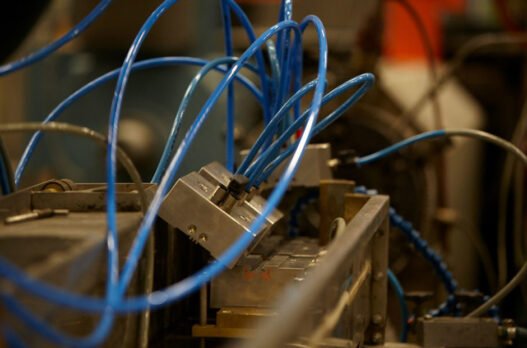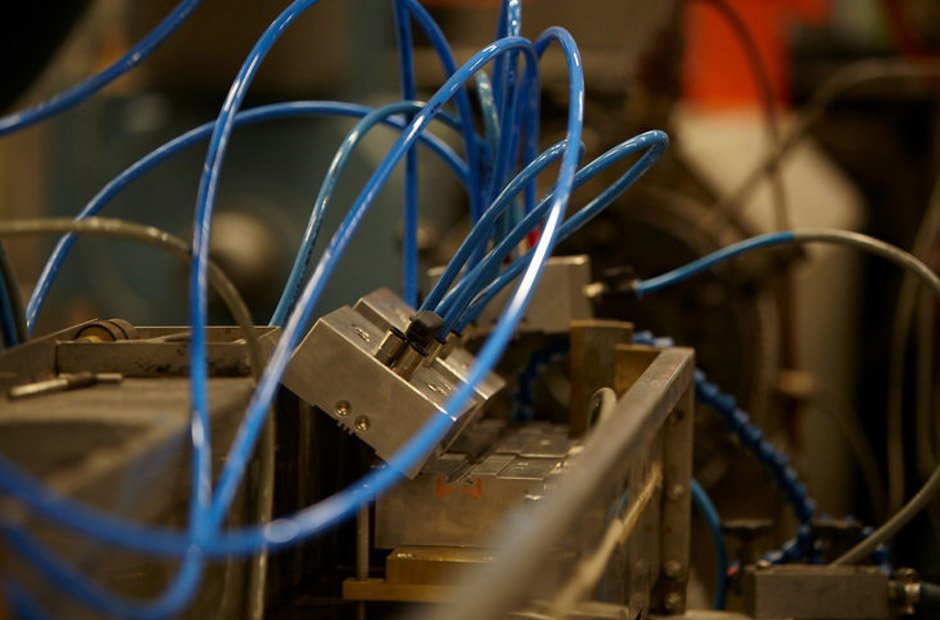Adopting advanced technologies in plastic extrusion enables manufacturers to remain competitive and enhance production efficiency. In this process, products like connectors, tubing, and panels rely on precise control and consistent output. Tools such as automated extrusion lines, real-time monitoring systems, and advanced die design are among the technologies driving these improvements. Here are a few of the emerging innovations transforming the plastic extrusion process:
Heat Activated Tape Systems
Manufacturers can utilize heat-activated tape systems to apply adhesive layers that remain non-tacky until they are heated. This provides greater control during assembly, as the adhesive only activates when needed. The tape is typically applied in-line during plastic extrusion, allowing for seamless integration into the production process.
Once heat is applied, the adhesive forms a strong, uniform bond. This system is ideal for applications that require precise alignment, high precision, and clean finishes. Manufacturers apply tapes as pre-assembled solutions to injection-molded parts, offering an efficient alternative to traditional bonding methods. This approach is often used in products such as automotive emblems, appliance control panels, and electronic display frames, where a fast and secure attachment is required.
Crosshead Extrusion Technology
Manufacturers use crosshead extrusion to coat or reinforce materials like cords, wires, or rods. This setup allows them to apply a consistent plastic layer directly over the substrate as it moves through the extruder. The result is a uniformly coated product ideal for applications where both flexibility and protection matter.
In-Line Fabrication Technology
In-line fabrication allows manufacturers to perform operations such as cutting, drilling, punching, taping, and printing directly during the extrusion process. Equipment can apply protective films, adhesives, or labeling without halting production. This reduces the need for secondary processing and increases output consistency and speed.
Injection Molding Technology
Injection molding enables manufacturers to create intricate details on parts of varying dimensions. Molten plastic is injected into a mold cavity to make the desired shaped and sized product. It is allowed to cool and become solid, at which point the final piece is ejected. The technique is employed in the production of diverse products and precision parts. This method is also beneficial when manufacturers need to make a large number of components within a short period of time.
Co-Extrusion Technology
Manufacturers make multi-layered plastic products using co-extrusion technology. This is useful because several materials are combined to create a single product. Co-extrusion is a process of feeding a number of plastic materials into one extruder. The mixture then gets forced through a die and takes on the desired shape. This confirms that the thickness and distribution of every layer can be controlled with great accuracy. This process enables manufacturers to adjust properties such as color, flexibility, and strength.
Work With a Plastic Extrusion Expert Today
To reduce waste in plastic extrusion, look for manufacturers that incorporate emerging technologies into their processes. They can integrate extrusion machines with process controllers that enable real-time monitoring of temperature, pressure, and material flow. Integrating automated quality control systems further reduces material waste by detecting inconsistencies during the production process. Contact a reputable manufacturer today to order custom parts specifically designed to meet your product requirements.













